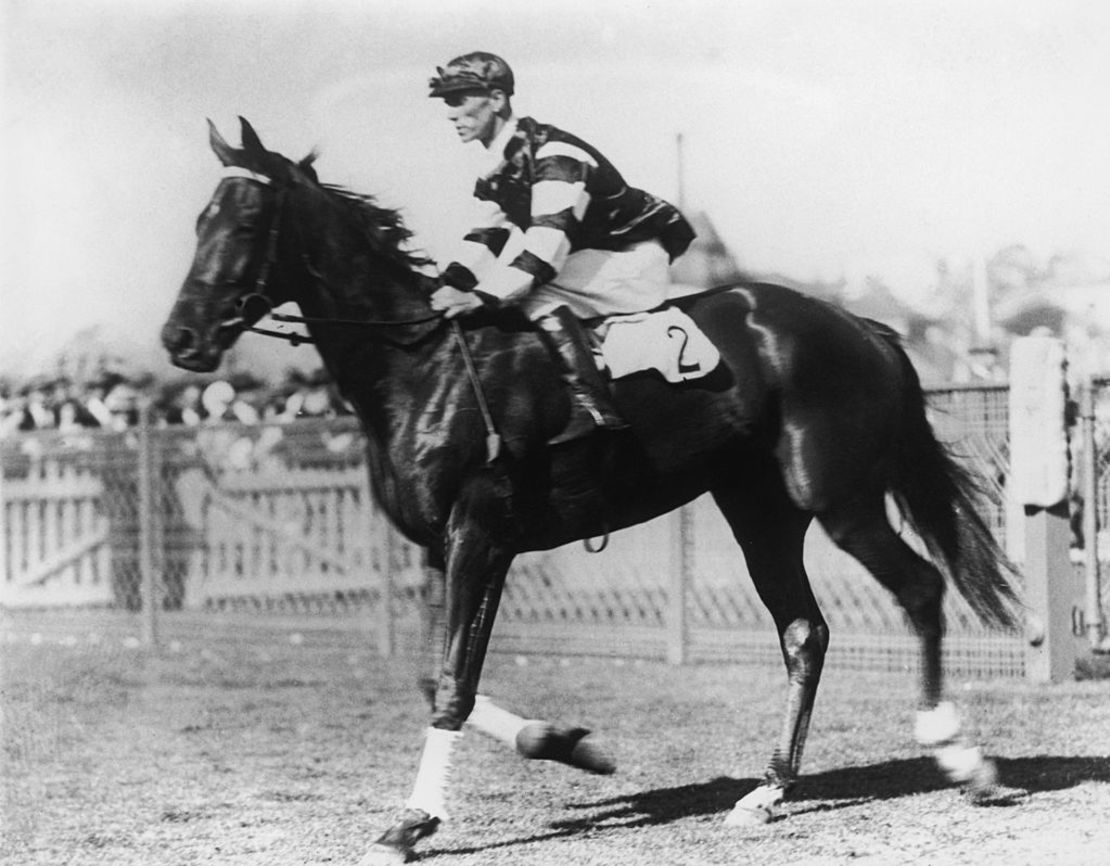Story highlights
Melbourne celebrates Phar Lap's 90th birthday
Living portrait of horse created
Phar Lap died mysteriously in 1932
He survived an assassination attempt and died in mysterious circumstances, possibly by poisoning at the hands of gangsters, but the legend of racehorse Phar Lap lives on in what would be his 90th year.
The champion gelding, known as “Big Red,” won the prestigious Melbourne Cup in 1930 and captured the imagination of the public during a thunderous career which yielded 37 victories from 51 races.
He died suddenly in his stall at Menlo Park, near San Francisco, in 1932, and the circumstances have been the subject of intrigue and conspiracy theories ever since.
To honor his birthday ahead of next month’s Melbourne Cup, which takes place at Flemington on November 1, a living portrait of his face was recreated by 350 volunteers on Monday.
Schoolchildren in racing silks even proffered a birthday carrot cake to Phar Lap’s stuffed hide in Melbourne Museum on Tuesday. His skeleton is on show at New Zealand’s Te Papa museum, while his heart is housed at the National Museum of Australia in Canberra.
‘Assassination attempt’
Phar Lap’s name derives from the word for lightning (or “sky flash”) that is common in the Thai and Chinese Zhuang languages.
He was born on October 4, 1926, in New Zealand but taken to Sydney to train with Harry Telford.
READ: $3.2M Arc prize for history-making trainer
With a gangly gait and a warty face, Phar Lap’s early racing career gave no indication of what was to come, but as his class came to the fore he began to win regularly.
He placed third in the 1929 Melbourne Cup and triumphed in the “race that stops a nation” the following year during a run of 14 consecutive victories.
While his success captured the public’s imagination in the early years of the Great Depression, he also became a target for criminals.
In November 1930, Phar Lap was shot at by a passenger in a car as he returned to his stable from morning exercise. He was unhurt and later that day won the Melbourne Stakes at Flemington.
Three days later he justified favoritism to land the Melbourne Cup.

‘Groaning in pain’
Phar Lap’s last victory was a record-breaking performance in the Agua Caliente Handicap, America’s richest horse race at the time, in Tijuana, Mexico. The famous Seabiscuit won the race six years later.
Phar Lap was then stabled at Menlo Park to await his next race when he met his sudden end.
Early on the morning of April 5, 1932, his longtime companion and “strapper” Tommy Woodcock found him with a high temperature and in severe discomfort. Vets were called but his temperature continued to rise.
In a newspaper excerpt from Brisbane’s Courier-Mail in 1936, Woodcock wrote Phar Lap had “swollen to half his size again and was groaning in pain.” He went on: “Then something inside him burst, he drenched me in blood and fell dead at my feet.”
Woodcock claimed Phar Lap had been poisoned by a criminal gang working for bookmakers, although the original autopsy was unclear.
In 2000, experts concluded he died of gastroenteritis, but in 2008 the Melbourne Museum released findings of a study of his mane which said he ingested huge amounts of arsenic shortly before his death.
Visit cnn.com/horseracing for more news and videos
Speculation over exactly who caused his demise may never be known, but Phar Lap’s life-size bronze statue at Melbourne Park is a permanent reminder of Australia’s “wonder horse.”

